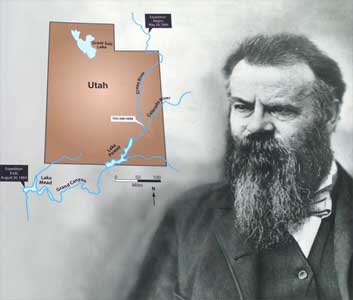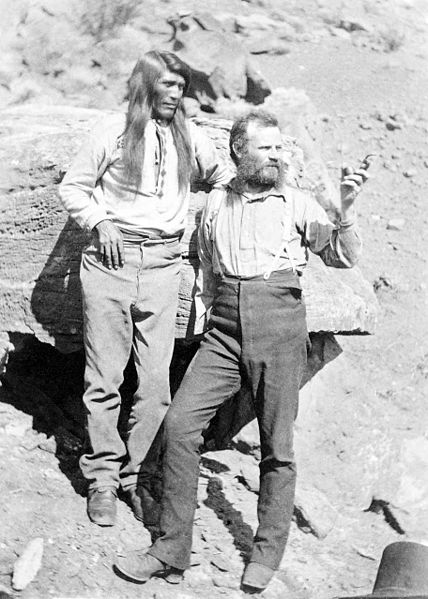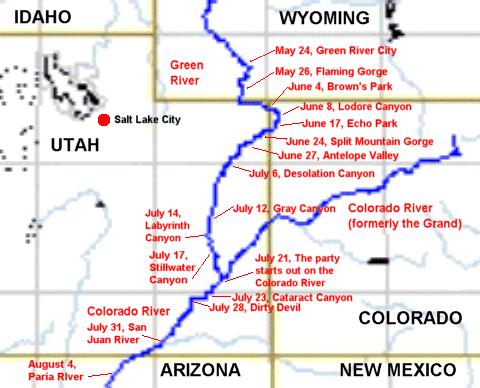
“We have an unknown distance yet to run, an unknown river to explore. What falls there are, we know not; what rocks beset the channel, we know not; what walls ride over the river, we know not. Ah, well! we may conjecture many things.” —John Wesley Powell
John Wesley Powell's expedition began in Green River City, Wyoming on May 24th, 1869 and travelled down the Green River to meet up with the Colorado River near Moab, Utah in Canyonlands National Park then into the great unknown of the Grand Canyon in Arizona.

John Wesley Powell was a soldier, scientist, and explorer. He is best known for his daring exploratory trips down the Green and Colorado Rivers in 1869 and 1872, and is credited with leading the first group of white men down the Colorado River through present day Grand Canyon.
It was 1869. Ten men in four boats were about to embark on a journey that would cover almost 1,000 miles through uncharted canyons and change the west forever. Three months later, only five of the original company plus their one-armed Civil War hero leader would emerge from the depths of the Grand Canyon at the mouth of the Virgin River.
Thirty-five-year-old Major John Wesley Powell was that expedition’s leader. From early childhood, Powell manifested deep interest in all natural phenomena. Original and self-reliant to a remarkable degree, he early undertook collection and exploring trips quite unusual for a youth of his age and studied botany, zoology, and geology wholly without the aid of a teacher.

Powell was born in Mount Morris, New York, in 1834. He served in the Civil War, where he lost his right arm at the Battle of Shiloh.

So, If you have camped, hiked, rafted, canoed, swam, floated, ice skated any part of the Green or Colorado Rivers as they run through Utah, then you have travelled in the amazing footsteps of John Wesley Powell and his mighty men. From Flaming Gorge to Dinosaur National Monument to Ouray National Wildlife Refuge to Green River State Park to Canyonlands National Park, the Green River made for a great journey into history.
Historical Societies Affliated with Trail
National Park Service
"Old Man River ain't got nothin' on me."
| A. | Camp 2 days and 1 night along or in the vicinity of the trail | ||||||||
| B. |
Travel the Trail Using One or More of the Choices Below
|
||||||||
| C. | Study the History of the Trail and Complete the Trail Quiz | ||||||||
| D. | Visit an Interpretive Center or Historic Marker |